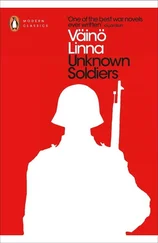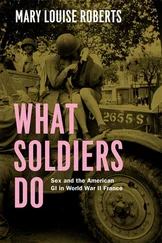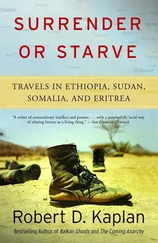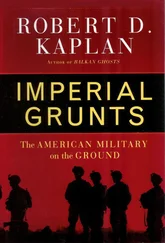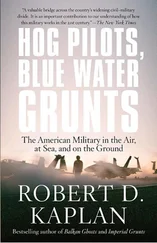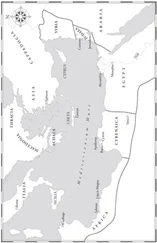At a Red Cross hospital for war victims, my feet finally touched solid ground. Real people packed the corridors; bullets, mortar fire, and mine fragments had torn up their flesh. The day I visited there were 103 patients, and since the hospital had room for only 60, the staff had set up tents on the lawn. The surgeons were working nonstop. A nurse shaved a little boy’s head in preparation for surgery. He shrieked with terror. Orderlies wheeled by with carts stacked with bottles of blood. The smell of disinfectant was everywhere. The situation was the same at the thirteen other hospitals in Baluchistan, I was told. But these patients, the doctors said to me, were the lucky few: the ones who had made the three-week trek on foot from Kandahar to the border and the grueling, bumpy drive from the border to Quetta without dying of their injuries or being killed by Afghan regime border guards. It was in the interest of the Communists that wounded civilians never reach the border alive; that way there would be no witnesses to what was happening.
I had never seen indications of this level of carnage in the hospitals I had visited in Basra, Iraq, in the company of a horde of other Western journalists writing about the Gulf war. Basra had a Sheraton, though. Quetta then had only the New Lourdes and the Bloom Star. Sure enough, when the swank Sareena Hotel opened in 1988, the number of journalists in Quetta increased dramatically. Still, stories about the Kandahar fighting in the American press and on television were practically nonexistent.
I wrote as much as I could about Kandahar for a radio network and a magazine. But the Red Cross hospital was as close to the reality of the fighting as I was able or willing to get at the time. I was scared. The vision of Charles Thornton, the Arizona Republic reporter who was killed by a helicopter missile just as he reached the top of a hill, made me think hard about crossing the border. But in 1988 I returned to Quetta and, swallowing my fear, was determined to reach Kandahar.
The NI FA villa, from where I began my trip to Kandahar, was in a Quetta suburb. It had only a few guns, but it was luxurious in comparison with more rough and ready mujahidin headquarters: there was air conditioning, marble floors, a tiled bathroom with Head and Shoulders shampoo, and a refrigerator filled with soft drinks and mineral water. Fashionable wicker furniture and a Persian carpet filled the living room. A Russian ceramic tea set from the czarist period sat in a cabinet against the wall. On the wall were photographs of King Zahir Shah, in exile in Italy. There was also a photograph of the Baghdad mausoleum of Sheikh Abdul Khader, reputedly the fourteenth direct descendant of the Prophet Mohammed and a distant relative of the Aga Khan and of King Hussein of Jordan, the great-grandfather of Pir Gailani. (The Pir’s family had migrated to Afghanistan from Iraq at the turn of the century.) Everything in this villa suggested comfort and privilege, but not even privately was I critical. Having gone into Afghanistan several times with the Khalis fundamentalists, I was grateful for the pampering. Whatever the fear and danger, I knew that being relatively clean and well fed would keep me happy for now.
A NIFA staff man brought me to the villa from my downtown Quetta hotel in a spanking new Land Cruiser with racing stripes, the latest addition to NIFA’s car fleet. As soon as I arrived, I met the mujahid who was to be my interpreter, Mohammed Akbar. He was twenty-one, spoke excellent English, and was a sophisticated Kabuli to the core. Had the Soviets not invaded, he would undoubtedly have gone abroad to study in England or America. His first remark was to ask if I had brought a sleeping bag, toilet paper, and water purification tablets for the trip. I all but laughed aloud. The gulf between Akbar jan (Akbar dear), as his NIFA comrades called him, and Wakhil, Lurang, and Jihan-zeb… the interpreter and guides for my first trip with Khalis’s Hizb-i-Islami… was vast.
NIFA supplied Akbar and me with a Land Cruiser (though not a new one), a driver, and several bodyguards. Kandahar was 150 miles northwest of Quetta. Before the war, the journey on the all-weather road took as little as six hours. By that idyllic standard, our route would be circuitous: straight on the all-weather road for 40 miles… halfway to the border… then northeast and east over the Baluchistan desert, hugging the Pakistan side of the border, then over the border into the Arghastan desert in a northwesterly direction, arcing north and west over Kandahar in order to enter the city’s environs from the southwest. This meant eighteen hours of continuous driving. But compared to the previous year, 1987, and the year before that, our trip did not seem circuitous at all. Back then, the northern arc over and around the city was much wider, and the journey took several days. Despite the Soviet-driven orgy of destruction in Kandahar, the military situation in southern Afghanistan had been steadily shifting in favor of the mujahidin, and this was reflected in the traveling distance from Quetta to Kandahar.
A turning point in the southern front of the war was the capture of the Afghan border garrison of Spinboldak, on the main road between Quetta and Kandahar, by the mujahidin in early September 1988, a few weeks before my journey. The Spinboldak fighting cost, at the very least, several hundred lives between May and September. The two or three paragraphs about Spinboldak that could be found on the inside pages of American newspapers described the fight as between the mujahidin and the Afghan regime’s forces. This was not exactly the case. The battle actually had little to do with the struggle against the Communists, and for that reason made for a revealing story about the guerrillas: it was the best case study of Pathan tribalism that the war produced.
On paper, the mujahidin of the fundamentalist parties, led by Khalis’s Hizb-i-Islami, fought the forces of General Ismatullah Muslim of the Afghan regime’s militia. In reality, it was a battle between the Achakzais and the Nurzais, two hostile clans within the Abdali (Durrani) tribal family. The Achakzais inhabited the plateau region between Kandahar and Quetta on the Afghan side of the frontier. As far back as the middle of the eighteenth century, the Achakzais had a tough, unruly reputation… even by the standards of the Kandahari Pathans. Ismatullah Muslim was a living monument to this tradition.
Ismatullah was a warlorci who in 1984, unhappy with the amount of weaponry the mujahidin were giving him, promptly switched to the side of the Afghan Communists, who made Ismatullah a general and paid him and his Achakzais handsomely.
One of Ismatullah’s first moves was to fortify Spinboldak, a sheer rock mountain rising from the flat desert. This offended the Nurzais, who claimed it as their territory and who held a pistol to the head of Yunus Khalis. Khalis’s teenage bride was one of the twin daughters of Nadir Khan Nurzai, the head of the clan. Nadir Khan had reportedly blackmailed Khalis the day before the wedding, saying, in effect, “I’ll give you my daughter only if you give me and my men weapons to fight Ismatullah.”
It was evening when the Land Cruiser pulled out of the driveway of NIFA headquarters in Quetta. One of the gate guards splashed a pail of water against the rear windshield… a Pathan blessing for good luck on the journey.
Even before leaving the all-weather road we got a flat tire. The jack was too short, so the driver had to build a platform of stones for it. When the vehicle wobbled, the driver crawled completely underneath it to adjust the stones with his hands. He was smiling and laughing, oblivious of the danger. When we were up and running again, I noticed he was missing several fingers… the result of a mine accident, he told me.
Читать дальше

